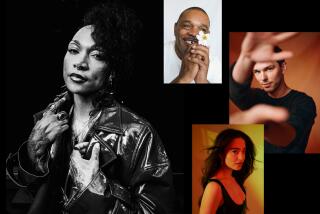
- Share via
At the 2024 Maison Margiela Couture presentation in Paris, haunting, tragic figures traipsed the runway like gothic, broken dolls. They jutted their hips in ways that seemed stilted, like baby deer learning to walk, while their arms hovered elegantly, undulating like swan wings. They were dressed by the inimitable fashion designer John Galliano, but it was Polish-born creative movement director Pat Boguslawski who masterminded the way models walked the runway, coaching and cajoling each one into the role of a stage actor. I wasn’t alone in finding the runway spellbinding. The video went viral.
While a choreographer dictates a sequence of movements for dance (and often works with experienced dancers), a creative movement director formulates a library of movements, gestures, expressions, character traits and narratives that inform how a model, actress or performer brings a vision to life. Perhaps the director demonstrates movements, or they suggest imaginary scenarios, or they provide images or text as motivation. L.A.-based Dalel Bacre may ask her subjects to mimic the ease and agility of a wild cat; in Paris-based Boguslawski’s case, he prompted models to play characters as if in a theatrical production.
Boguslawski refers to the epic, flamboyant 1990s fashion shows as inspirational. The revered L.A.-based creative movement director Stephen Galloway also cites this era. The runways of Alexander McQueen, Vivienne Westwood, Versace, Tom Ford and John Galliano weren’t merely po-faced models stalking a runway but full theatrical, momentous events.
Galloway is commonly cited as the person who helped pioneer creative movement direction. After two decades as a principal dancer with Ballet Frankfurt, he extended his vision to costume design and went on to join Issey Miyake as creative director between 1993 and 1997. During that time, Mick Jagger reached out to Galloway for guidance on creating a stage persona blending high fashion with theatricality. For nearly 30 years, Galloway has been the creative movement director for the Rolling Stones and has applied his expertise to runways as diverse as Versace, Gucci and Yves Saint Laurent. Galloway’s restlessness — he’s in Paris, L.A., New York, Berlin — and his diverse portfolio of work is enviable: dance, media, music and runways. “I’m part of the team as much as the photographer, and the stylist. So, we’re having that conversation together,” he explains.
I spoke with five creative movement directors who exemplify the diverse, even contrasting, ways to fulfill this role anywhere, with anyone. They’ve shared the stories behind some of their most prized projects.
Stephen Galloway
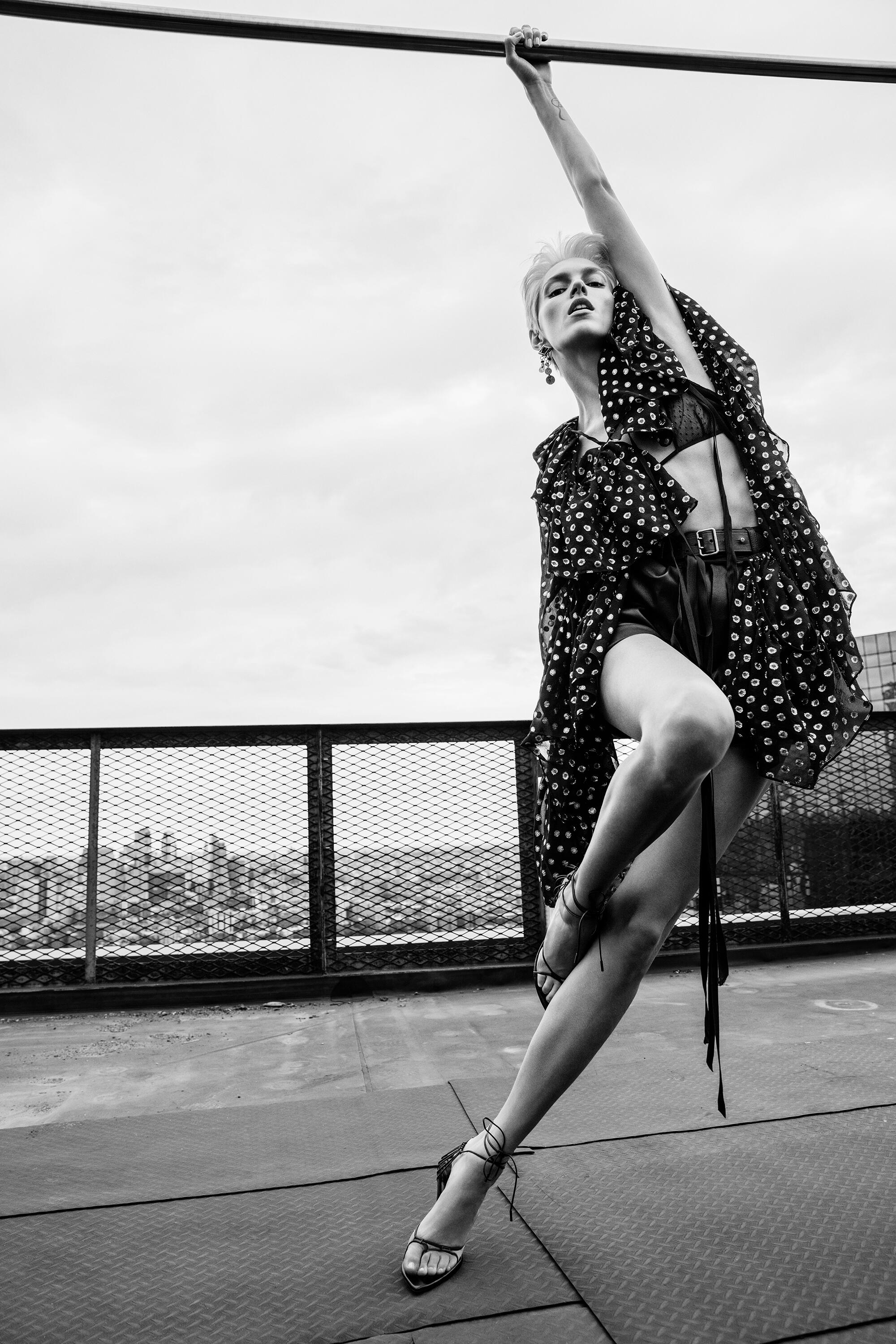
I didn’t start out to create this job. I started out of necessity and out of curiosity. It’s always felt extremely organic, and I still feel like I’m doing it for the first time. When people want to know what the process is, there is no process. The process is experience, and that keeps me excited about the whole thing. I’m a serial Pisces. I’m a serial collaborator — the work never stops.
I do a lot of preparation into what the overall creative is. The difference between a movement director and my role as a creative movement director is that I’m brought in at the very, very beginning where the actual creative [direction] is being formed. So I have a lot of direct input.
I recently started a company called the Movement Creative, which will represent creative movement directors around the world, kind of trained in the “Galloway technique.” I can’t do every job, as much as I would like to. So it’s great because now I have a wonderful group of artists who the world will slowly get to know. I loosely, jokingly say “the Galloway technique of creative movement direction,” but it really is a structure which is folk-based and focused on that Lee Strasberg school of acting. When you walk onto a set, you’re entering a world and you have to read the room. Someone recently referred to me as a “social mathematician” — I giggled, but then I thought it was actually a true assessment. Walking onto a set of 40 people I’ve never met in person before, when you’re there to create that magic, you have to assess that energy and pull it together with people of various experience levels. I’m that connection between the client, the photographer or director, the stylist, the hair and makeup team.
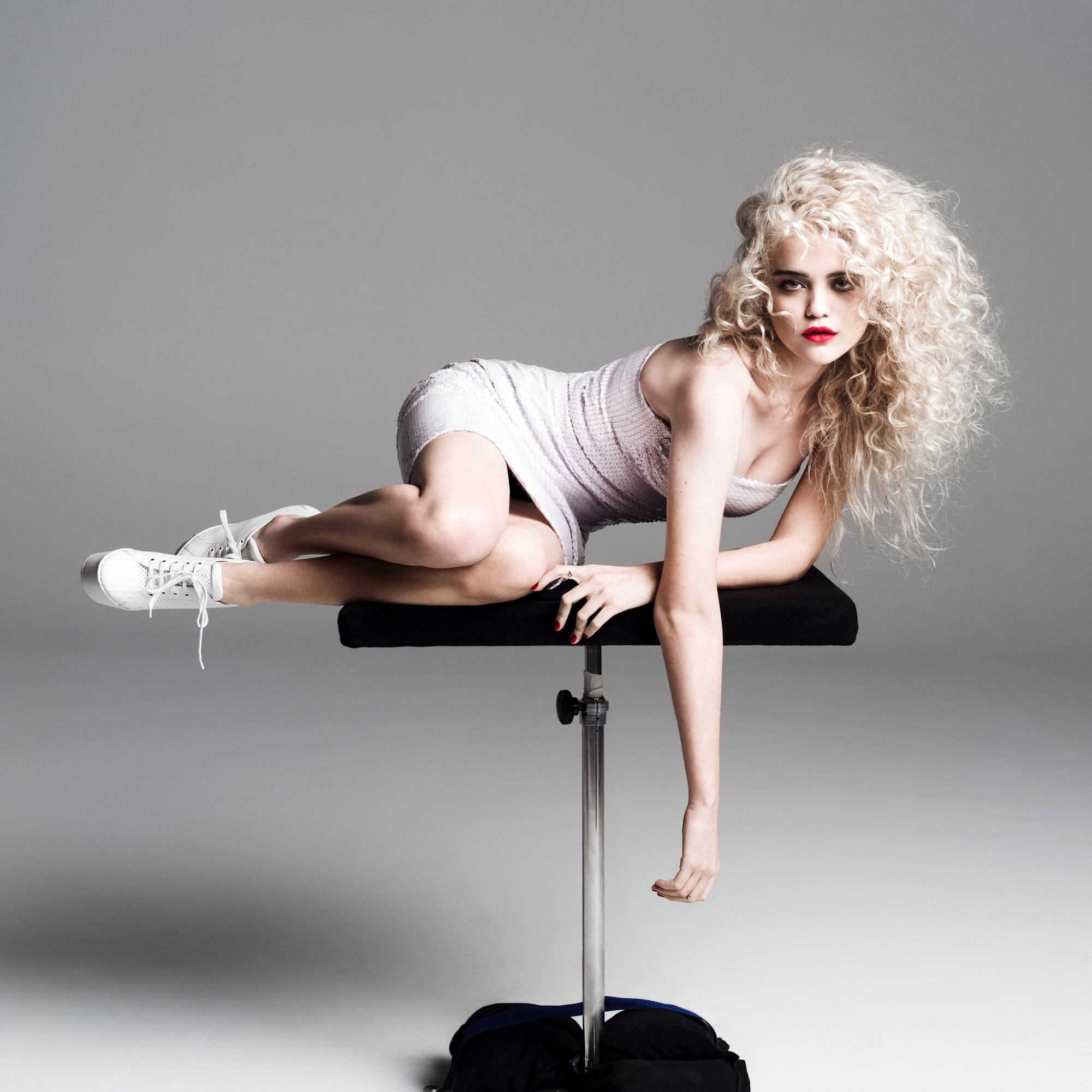

It helps if you understand the body coming from dance. But it’s not a necessity. Some of my favorite jobs are where you don’t even know that I was there. It’s not about me being on set and having them do, like, a big dance position. The Tom Ford project was something specific because Tom wanted that, but if you look at the Loewe job, it’s something completely different. If you look at the Benicio del Toro portraits that I did with Jamie Lee Curtis, it functions on a different level of communication — through the image, through the artist, through the talent. Creative movement direction doesn’t have to do with dance.
“Someone recently referred to me as a “social mathematician” — I giggled, but then I thought it was actually a true assessment.”
— Stephen Galloway
When I work with actors on jobs, on the call sheet before the first day of work, the production company will sometimes write “Stephen Galloway, choreographer,” and we’ll get 10 calls from the talent’s manager and publicist saying, “What do you mean, a choreographer?” There’s a lot of power in those words, and it’s important that people understand that going in, because an actor likes to prepare. No one wants to be surprised on set. Sometimes the people who are making the production teams don’t know the difference themselves — they just think, “Oh, we got this guy who’s going to help her pose.” It’s a lot more than that. It’s not about just making someone pose. It’s about helping someone communicate. And for that, that requires time, experience and understanding.
Zoe Rappaport

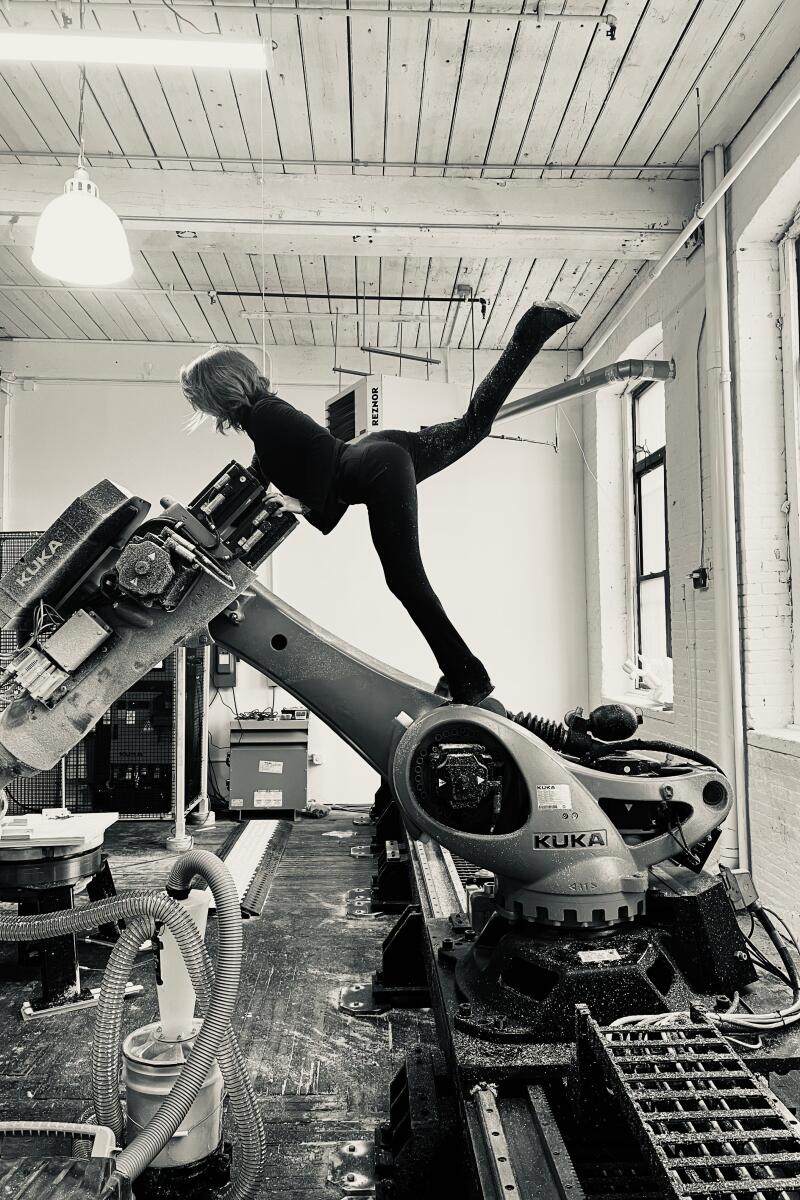
Left: “Synthesis” for Schön! Switzerland. Creative Director: Alex Palomo; Movement Director: Zoe Rappaport; Model: Kiara Marshall; Stylist: Nathan Sweet; VFX Studio: Volvox Labs; Editor-at-large: Odie Senesh. Right: Zoe Rappaport meeting “Kuka” the robot camera to explore movement possibilities in preparation for the Schön! editorial Volvox Labs, Brooklyn NY. (Julia Comita)
I danced all my life, even in the womb. My mom played Zen chanting music through headphones on her belly when she was pregnant with me. After dancing all through school, I started choreographing when I was living in New York from 2007 to 2014. Brooklyn, around 2010, was really interdisciplinary and there was a lot of experimentation, and I was beginning to explore creative movement direction before I had a term for it. I’d begun working with friends of mine across all artistic disciplines, so my movement language is diverse — hip-hop, modern jazz, blues, new style hustle.
When I moved to L.A. in 2015, I was choreographing for myself and others, but after my aunt, who runs a major photography agency, introduced me to the work of Stephen Galloway, I recognized that this was a job I could do, and Stephen was the blueprint. I began working with magazines like Love, and on campaigns for Estée Lauder, as a creative movement director.

This editorial, “Synthesis” for Schon! magazine, began as an idea from the photographer Julia Comita, whom I collaborated with alongside creative director Alex Palomo and Volvox Labs in New York. It began as a conversation and resulted in futuristic, apocalyptic visuals and video work.
Julia and I met on Instagram because we were fans of each other’s work. She told me this idea of working with these robot cameras and differently limbed models. “Synthesis” is about humans and technology coming together to create unity and beauty, rather than man-versus-machine. We really felt that limb-different folks with prosthetics have been living with technology much longer than able-bodied people have been, and we have a lot to learn from them. My job is a lot about making sure talent feels safe, comfortable, supported, and for them to really be able to show up in their full selves and be expressive.
“My job is a lot about making sure talent feels safe, comfortable, supported, and for them to really be able to show up in their full selves and be expressive.”
— Zoe Rappaport
When I saw the robot camera, I got right onto the robot and began climbing it, exploring what was possible. We wanted the robot and the models to be integrated. We had a deck of specific images that Julia and Alex were going for: photographs of humans and machines coming together. The fashion was fundamental too — I can’t do much until I know what models are wearing. If they’re in a pencil skirt, we’re not doing crazy leg movement. Fabric and cut really dictate what poses are possible.
The stylist on this had so many pieces. One image features these huge, oversize petals that are flexible. Kelly [Knox] wore it, and there was a lot of playing with this wearable art, or Kiara [Marshall] wore this dress upside down, which looks almost like a sea urchin. The cover photo is one of my favorites, and that shows Kiara emerging from the mechanical robot arm with these wild, plasticated gloves. It was fundamental to make sure Kiara and Kelly felt comfortable, and working out the logistics of working with people and the robot to make it all work.
Pat Boguslawski
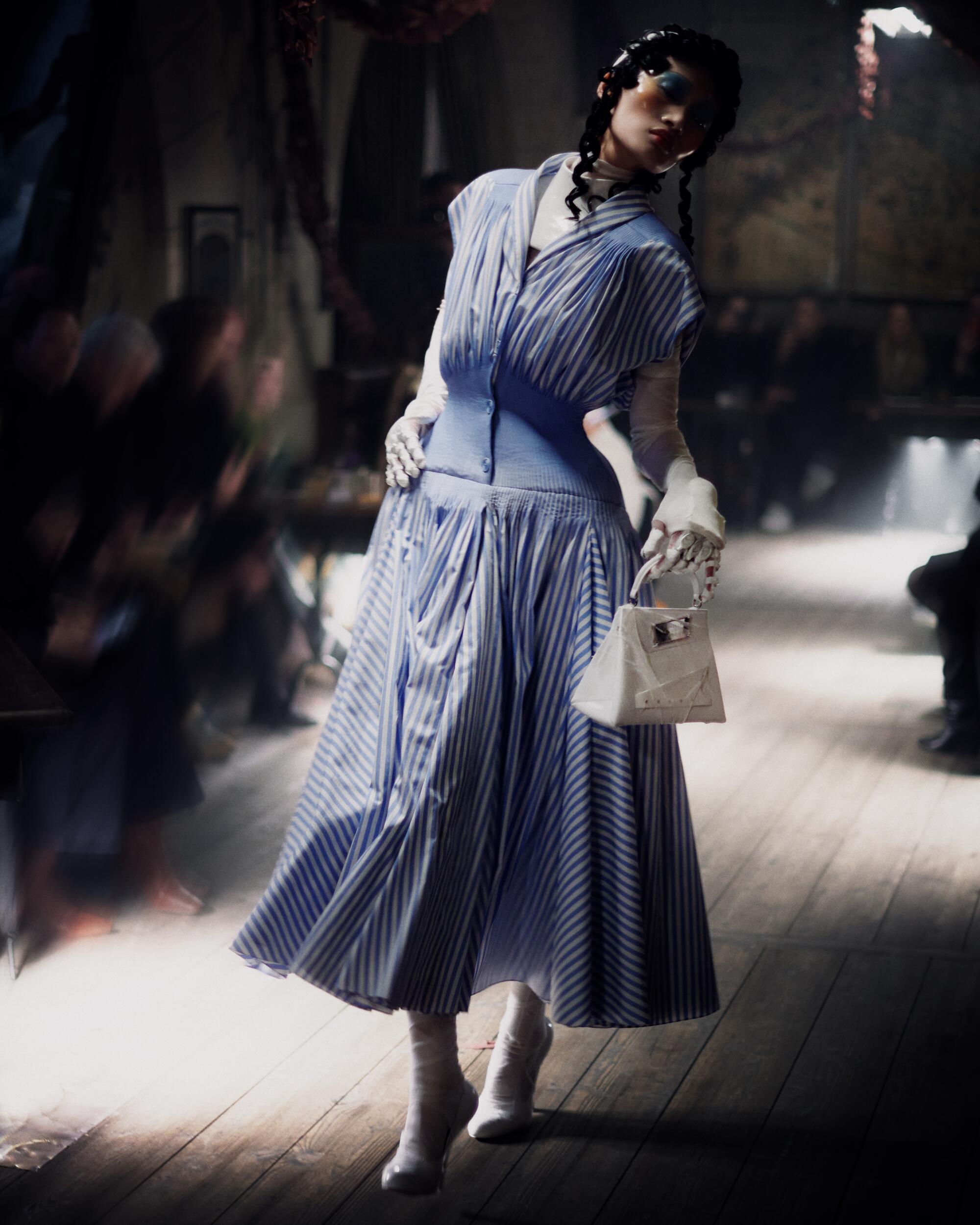
I met John Galliano after I sent a DM to his husband, Alexis Roche, and said, “I want to work with you guys some time.” Alexis was working as image director at Margiela at the time. He said we should have a coffee in Paris, which is where I showed him my portfolio. I got a call a few days later that John wanted to meet me. I was so nervous! When I started doing creative movement direction, my goal was to work with John Galliano, and three years later, I was doing it.
As a child in Warsaw, I used to watch Fashion TV. The drama, the fun, the creativity! I knew I wanted to be a part of it, but I didn’t know what I wanted to be. Even in my job now, I want to have fun, and fashion is supposed to have fun.
I started dancing by accident because my friend wanted to take a dance class, so I went along, and within two classes I was hooked. While studying dance, I went to London a year later, followed by Los Angeles, but I was getting bored of dancing by that point. When I was 21, I took time off dance and went back to Poland, where I started modeling, which led me to acting, which I studied for three years. Then I moved to London, and I was working as a creative assistant, which is where I realized I wanted to work in fashion as a movement director because fashion was so stiff, so boring — I wanted to change things.
After John called me to Paris, I went to the Margiela offices. John had this special room where he kept all his inspirations: walls covered by images, paintings, hair and makeup inspirations, everything he’d collected for years. There was a model of the runway in the center.




Maison Margiela Spring/Summer 24 Haute Couture runway show. Movement director: Pat Boguslawski. Models: Clockwise from left, Lulu Tenney, Leon Dame, Nyaduola Gabriel, Dugyeong Kim (Britt Lloyd)
I don’t choreograph, really — it’s very organic. I create characters for each model based on stories I’ve made up. We worked from 9 a.m. to 1 a.m. over seven days straight. Each model has a different character. John has asked me what I tell them, but it’s a secret.
With Gwendoline [Christie], it was easy because she’s such a good actress, so she gets it, she sees it. Sometimes I show the models what I mean if I feel like my notes are not enough, and I’ll show them how to move, how to walk.
When I’m working with John, I’m with him from the beginning and the fittings, so we have all this time to make sure we can build a show. It’s like the theater. It really is a show.
The moment that really got me during the show was the reaction of the people there. You’re working with so much adrenaline and we’re doing something that we love and we’re proud of, so you’re not thinking about how people will respond. Once the show was happening, people were screaming. We were like, “What just happened?” I’ve never experienced anything like it. Anna Wintour came backstage. She was overwhelmed, and she just said, “Amazing, amazing!”
I wasn’t watching the show. I was too busy talking to the models, showing them the poses, giving them characters, but afterward, I had to go into the hallway and have a cry.
Dalel Bacre
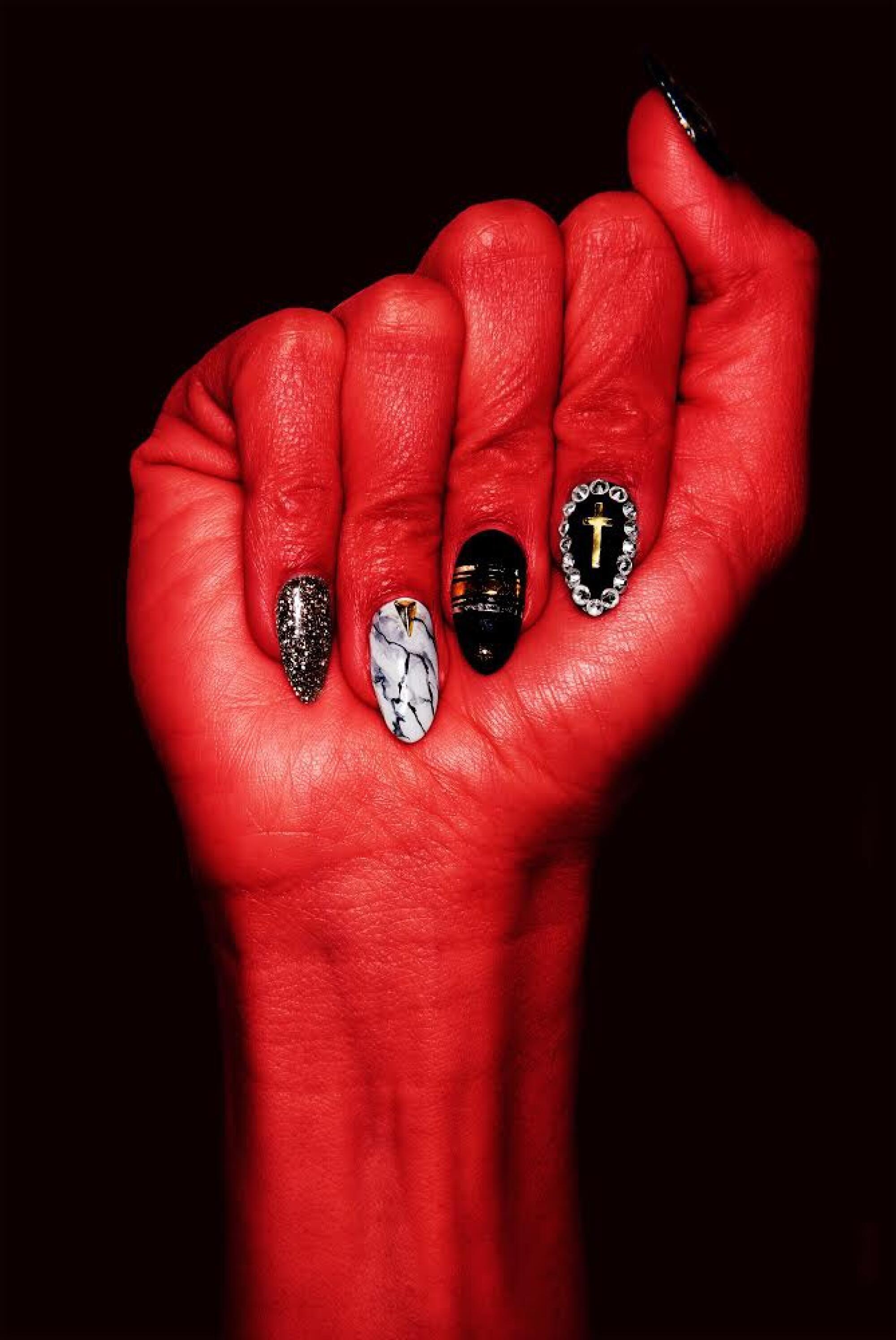
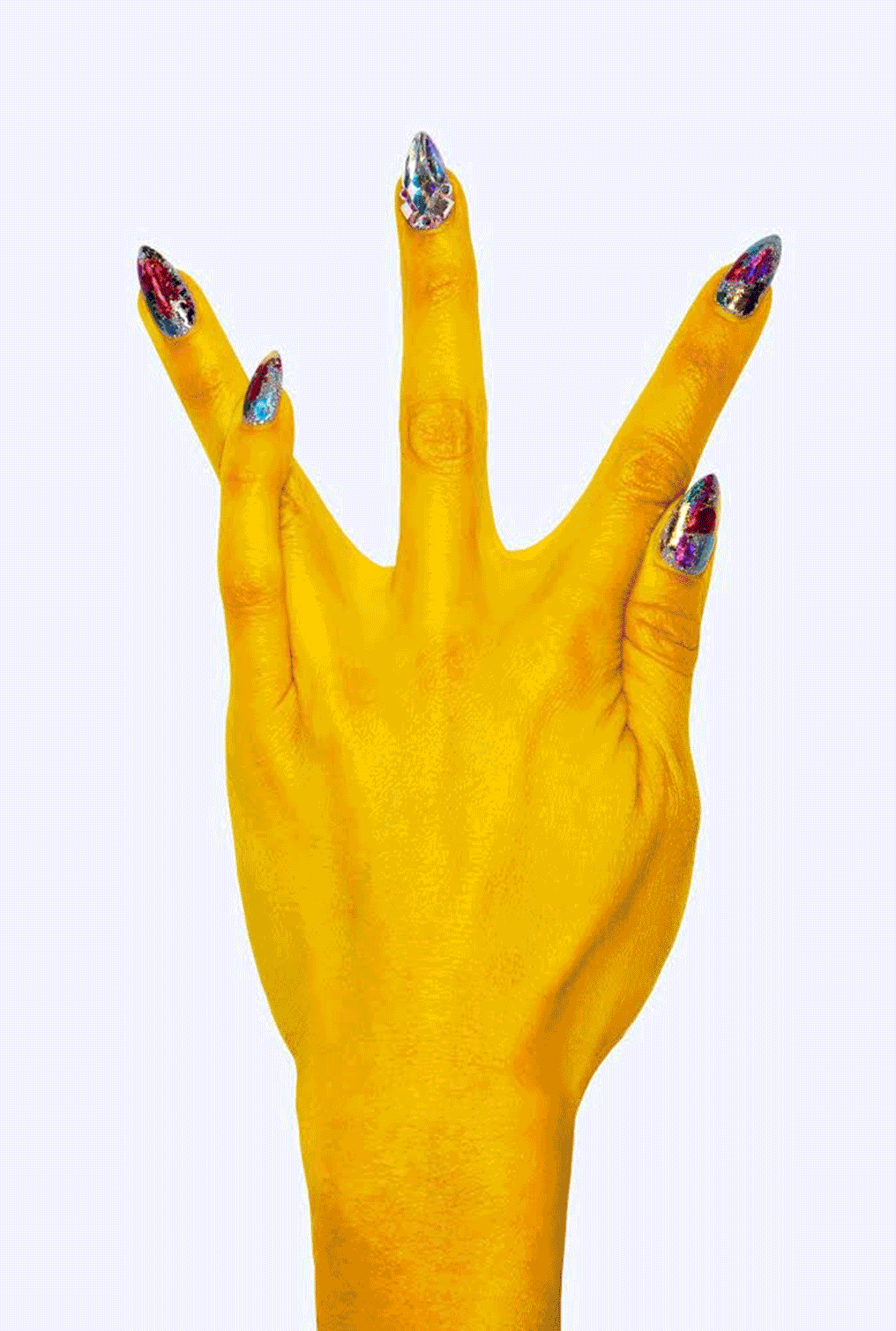
I was born in Mexico City, raised in Mexicali, and moved to Los Angeles full-time in 2016. My mom enrolled me in ballet when I was 4, and I was studying classical and contemporary classes, dancing in different companies in Mexico and Europe until I was 28. I’m still a performer with companies and solo, in addition to being a creative movement director. The transition happened when my boyfriend at the time, a well-known fashion photographer, invited me to a photo shoot in L.A. These celebrities were moving very awkwardly, and I was able to identify that it was how they held their hips or posed their hands. Eventually, [my boyfriend] said, “You know what, get up and go tell that person what you were telling me!” So I went and did it and it worked really well. That was in 2016, and he told me, “Oh man, you’re really good at that, performing and telling people what to do.” From there, he introduced me to agents in New York and L.A.
Ten years ago, the role of creative movement director wasn’t really recognized, and the agencies were asking whether I was a choreographer. Soon after that, the movement direction as a career title began to grow because other people were doing it too, whether they called themselves that or not. Still, the [agencies] took me on, and I began working on fashion campaigns, films and motion capture for video games like Lily Cowles’ character in “Call of Duty: Black Ops Cold War.”
“My role differs from one job to the next, so it might be reading a film script and picking up on ways a character moves that aren’t written in the script.”
— Dalel Bacre
I worked with Olivia Hamilton for the movie “Babylon” for a couple of scenes. She shared the script with me, and after reading it, I came up with the idea that her character might be limping, related to her addiction, right? That’s what it’s about, how this person will move. It could be something very simple, like, “Just close your hand when you’re taking the glass of wine,” to more elaborate, sophisticated things like, “You have a tic, one of your hips is higher than the other one.” Just giving tips that will make you move differently.
My role differs from one job to the next, so it might be reading a film script and picking up on ways a character moves that aren’t written in the script. Perhaps that character was injured and had a limp, or in a video game, even though the actress is holding a pen, she has to hold it and move like she’s holding a knife.
What really inspires me is the way animals move. They think in 360 degrees, and they use all their energy. They’re not wasting time thinking, “I wish I was thinner, bigger, shorter” — they use all their capacity of sight, smell, hearing and their bodily potential. Have you seen how a cat moves? They’re really present in their movement, they’re right there.
Austin Goodwin

I met [fashion designer] Jackson [Wiederhoeft] five years ago through our partners at the time. Jackson asked me to help movement direct their first collection, and we’ve continued to work together since.
I was more involved [with the SS2025 runway show] as co-creative director with Jackson, so I was involved in set design, lighting and the soundscape. That was wonderful because sometimes as a movement director, you’re brought in at a later point and you’re given the music or just given parameters, which I do love, but [working with Jackson] gave me more scope.
I will usually try to get a piece of music before we begin. I listened to a lot of children’s choral music, and Jackson was very inspired by this extinct bird — the kauaʻi ʻōʻō — and one of the last recordings of its call. There was a lot of inspiration from bird calls in terms of signaling things, like a mating call or birds signaling an alarm or danger. Even though I don’t choreograph to the musicality, that soundscape gives me so much support when I’m working. Jackson will come to the rehearsals. For the SS2025 show in particular, there was an opening scene and then a finale with 40 brides, which is pretty unbelievable.
Jackson might come into rehearsal and give feedback like, “It needs to be more chaotic,” and we have a great dialogue where he says, “Can we try this?” and sometimes I push back if I feel strongly about a moment, and we find a nice balance. A lot of the models we work with for the runway are dancers. I’m helping with casting now, and whenever there are movement elements, I cast performers from different backgrounds to get a nice mix.
We’re trying to create an experience for people to see Jackson’s collections and feel immersed from start to finish, which is sometimes missing from the runway. I want there to be a theatrical nature. Sometimes when we see the garment on the model, we’ll talk about textures of movement, words that evoke the movement and moods. At the end of the day, I want models to have fun and bring themselves fully to what we’re making.

Cat Woods is a freelance journalist who has written extensively on music, books, screen and visual arts. When she’s not writing, she’s teaching Pilates, and both require a passion for storytelling, articulacy and joy in learning and community.



